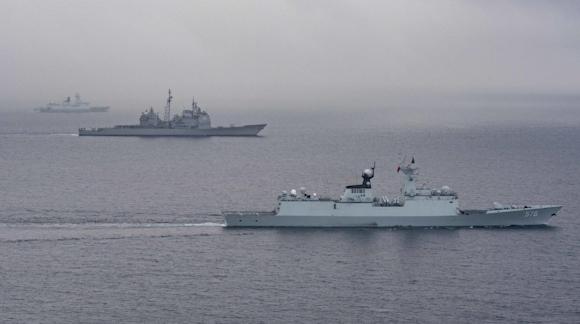When asked whether there is a danger of an armed confrontation between the US and China, reference is often made to what Graham Allison has baptized as the Thucydides trap: the possibility, in history that has happened several times, that an emerging power triggers a conflict with an already established.
Precisely what, at the end of the fifth century BC, happened between Athens and Sparta, despite the two cities having long been linked by a treaty of friendship, which however did not prevent the Athenian side from perceiving a growing threat, which had then the tragic epilogue that we all know.
This is, by the way, a situation that is far from rare in history, which Allison has studied 16 more times1, and which (only) in four cases did not lead to an armed conflict.
The parallel is then immediate with what is happening today between China, a power in the making, and the USA, which are in place, net of the more or less reassuring public statements of their respective leaders, in which tones of threat alternate with demonstrations of friendship.
What is certain is that there are notable similarities in the way the two powers have prepared (USA) or are preparing (China) their own ascent.
Think of the Monroe doctrine, named after President James Monroe who enunciated it in 1823, with which the United States claimed its influence over the whole new continent, except for the European colonies already established, undertaking not to interfere in the disputes between the European powers, and between each European power and their respective overseas colonies.
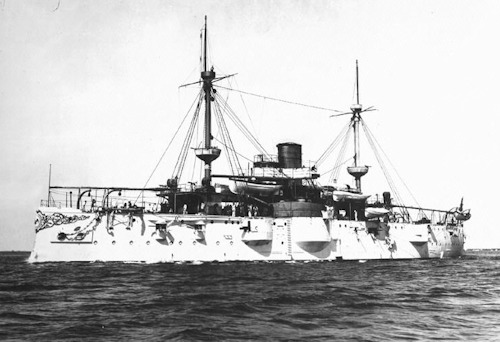
That was a declaration for the revolutionary era, an outrage to the old Europe, which canceled 300 years of global European domination, pronounced - not a secondary element - by a very young state and completely lacking the tools to translate it into practice, such as, for example, a noteworthy warship.
As early as 1890, in fact, the USA did not own any vessels2 war (although in the next fifteen years they will build as many as 25, becoming the most powerful fleet on the continent).
We do not know whether or not Xi Jinping was inspired by this doctrine, the times in which he stated that "it is up to the peoples of'Asia manage mutual relations". It is true that since taking office in 2012, the new helmsman has oriented his efforts to consolidate Chinese hegemony over all of Southeast Asia, in stark contrast to the US presence in the region.
It is in that quadrant, in fact, that the Dragon plays its main geopolitical game.
Not only as a "backyard", as Latin America is for the USA, but also for its being an identity place, in which, historically, that sinocentric system has taken shape, which radiates from Beijing towards the traditionally tributaries of its civilization.
This is also the place, this time geographic, through which three quarters of goods to and from China pass, and 80% of energy resources, whose control is evidently a strategic priority for Beijing.
The way in which the United States favored the construction of the Panama Canal is also reflected in today's Chinese policy
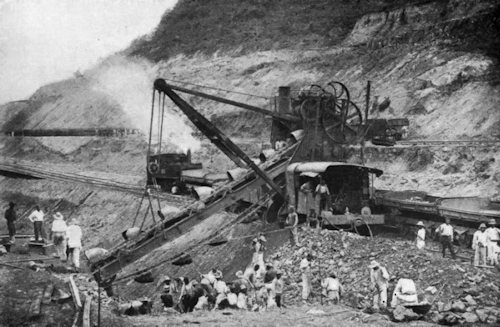
The idea of connecting the two oceans dates back to the first European presence on the continent. They had thought of it, but both the French and the English had given up.
Theodore Roosevelt, at the end of the nineteenth century, however, linked its realization to reasons of national security, since the military boats of the young nation, to deploy from one coast to another, had to travel over 14 nautical miles.
Reason for which, having overcome the design problems, he did not hesitate to provoke an insurrection in the Central American republic, which replaced the one in office with a government favorable to the construction of the work.
China today pursues similar objectives, albeit in different forms. Such as the construction of the Kra canal3, between Burma and Thailand, which will allow it to shorten sea routes by 1200 km.
Or the corridor of Gwadar4, which once completed, will allow it to bypass the entire Indian subcontinent, allowing goods to reach the northwestern region of Xinjiang via Pakistan.
Beijing today (like Washington then) has its own strategic vision, and thinks in perspective, with the advantage, compared to its American competitor, of not having to submit to the conditioning of democratic states.
Not surprisingly, the Chinese initiatives worry Washington today, at least as much as the American ones in Panama aroused the fears of the European capital at the time.
 In both cases, conflicting trajectories are observed between a new actor and a consolidated one, which create conditions of permanent instability, barely veiled by a thin layer of formally acceptable diplomatic relations.
In both cases, conflicting trajectories are observed between a new actor and a consolidated one, which create conditions of permanent instability, barely veiled by a thin layer of formally acceptable diplomatic relations.
These trajectories are partly attributable to what some Chinese analysts say5 consider the main tension factors between the two powers.
First of all, the progressive reduction of the distance in the economic and military fields, which together with the deterioration in the respective public opinions of a feeling of mutual benevolence, make mutual acceptance extremely difficult.
Then there are the differences in values, cultures, and the idea that both have of the mission entrusted to them, to consolidate in both countries the firm conviction of their own uniqueness, to be translated, especially in the international field, into necessarily consistent actions.
This ultimately leads - lastly - to the formulation of necessarily conflicting political agendas, which further deteriorate the already precarious framework of relations.
Despite what Xi wants to imply with his narrative, often stuffed with references to harmony between nations and collaboration between equals, while respecting mutual differences, the one in progress between China and the US is a zero-sum game. which has as its stake the partition of global capitalism6 and the redefinition of the respective areas of influence.
A game to the death, from the comparison of which winners and losers will emerge, and new position revenues. To which, the geo-economic initiatives implemented by Beijing to protect its interests are certainly attributable, within the framework of the strategic vision mentioned above, not only those related to the project Belt and Road, which crosses 65 countries and where 44% of the world population lives, which is worth 30% of global GDP, but also the bilateral agreements signed with numerous countries in Africa, Asia and Europe.
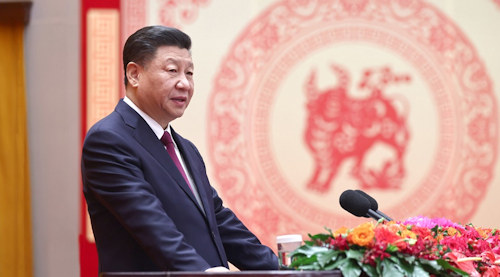
These are relationships that Beijing never tires of defining as "win-win", to which undoubted economic (new market) or strategic (connections, availability of a port, etc.) advantages are also added significant benefits for partners, which in many cases see facilitated access to credit, without the exorbitant conditioning (liberalization, privatization, reform, etc.) required by the World Bank and the Monetary Fund.
Examples are the India - Pakistan economic corridor with its network of oil pipelines, railways, highways and power plants and the port of Djibouti, with the annexed railway connecting it to Addis Ababa (the first electrified cross-border crossing in Africa) .
Interventions that, contrary to what one might think, are not only linked to the construction of infrastructures in the host country, but also to broader policies aimed at promoting local small and medium-sized enterprises, as long as they generate future profits.
If there is a difference between the Chinese interventions to shore up its own hegemony, with the American ones of over a century ago, it must then be sought precisely in the exclusively (geo) economic nature of the international initiatives of the Dragon. The economy, on the other hand, is the tool with which to achieve the Millennium Goals7, and ensure the stability of the regime.
Returning now to the initial question, if there is danger of an armed confrontation between the US and China, the answer is currently a decided no, at least until Beijing sees its "One China policy8”And will not reach the last millennium goal of becoming a "Modern socialist, prosperous, strong, democratic, culturally advanced and harmonious country".

At this stage, China is still a power in the making, and needs to govern its political and military rise from within.
The instruments of diplomacy, and those referable to the economic and commercial field, allow it today, on the one hand to contain the American adversary, gradually eroding its hegemony, and on the other hand to continue its project of national affirmation.
However, there are no guarantees that this will happen in the future as well; especially if Washington continues not to recognize Beijing as its "living space" in the southeast. In this case, a situation of “friction”, like the many we are witnessing in the Taiwan Strait, could generate ripple effects that are difficult to control.
An accidental collision in the waters of the rebel island, a unilateral declaration by Taipei in contrast with the One China policy, a collapse of the North Korean regime: these are just some of the hypotheses (Allison 2017) that could provoke a conflict between the US and China in the future .
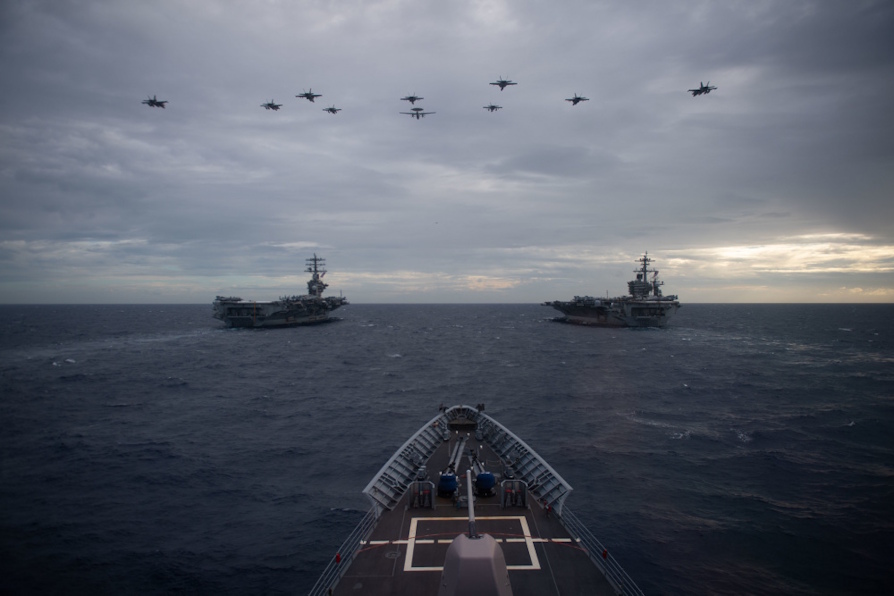
2 Destined for wars by Graham Allison. Scribe publications 2017 page 92.
5 A "perfect" China by Michelangelo Cocco. Carocci 2020 page 30.
6 ibid
8https://en.wikipedia.org/wiki/One-China_policy
Photo: US Navy / Ministry of National Defense of the People's Republic of China / State Council of the People's Republic of China

